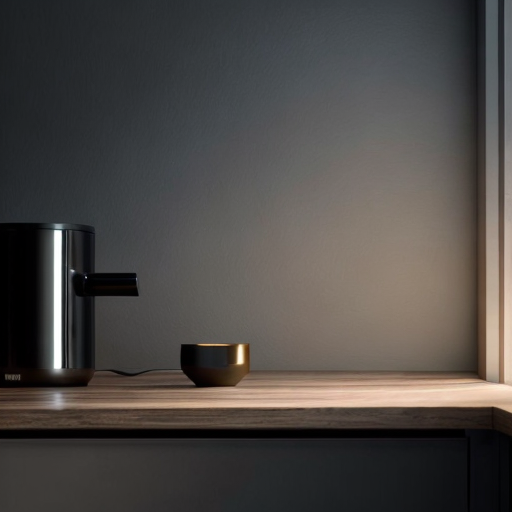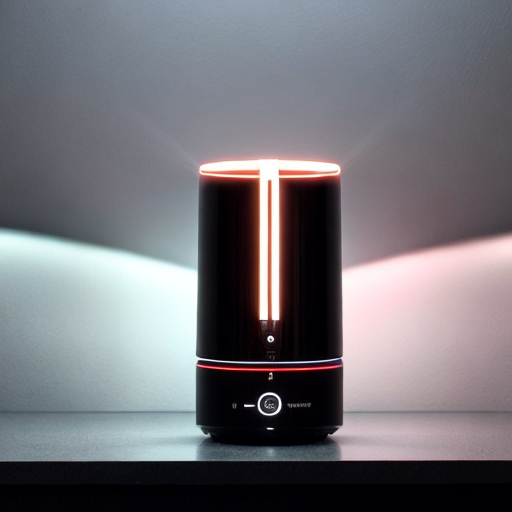Understanding the Fundamentals of Smart Home Design
Designing a smart home is like trying to teach your grandma how to use emojis - it requires a delicate balance of functionality and simplicity. First things first, you need to understand the fundamentals. It's not just about having a fridge that can order groceries or a thermostat that knows your preferred temperature. No, no, my friend, it's about creating a symphony of interconnected devices that work together like a well-oiled machine. Picture this: your lights dimming as you enter a room, your coffee brewing itself in the morning, and your curtains magically closing at sunset. It's like living in a futuristic sitcom, minus the laugh track. So, buckle up and get ready to dive into the world of smart home design, where even your toaster can become your new best friend.
Choosing the Right Devices and Technologies for Your Smart Home
An interesting fact about designing a smart home is that it can significantly improve energy efficiency. By integrating smart devices such as thermostats, lighting systems, and appliances, homeowners can easily monitor and control their energy usage. For example, smart thermostats can learn the occupants' preferences and adjust the temperature accordingly, saving energy when no one is home. Similarly, smart lighting systems can automatically turn off lights in unoccupied rooms or adjust brightness based on natural light availability. These features not only enhance convenience but also contribute to reducing energy consumption and ultimately lowering utility bills.
Choosing the right devices and technologies for your smart home is like assembling a superhero team - you need to carefully select each member based on their unique abilities. Start by identifying your needs and priorities. Do you want a voice-controlled assistant that can turn off the lights with a simple command? Or maybe you're more interested in a security system that can detect intruders and notify you immediately. Once you have a clear vision, it's time to do some research. Read reviews, compare features, and make sure the devices you choose are compatible with each other. Remember, a smart home is only as smart as its components, so choose wisely and create a team of devices that will make your life easier and more enjoyable.
Creating a Seamless and User-Friendly Smart Home Experience

Creating a seamless and user-friendly smart home experience is like being a magician - you want everything to work flawlessly behind the scenes, while leaving your guests in awe. The key to achieving this is integration. You want all your devices to communicate with each other effortlessly, like a well-choreographed dance. Start by choosing a central hub that can control all your smart devices from one place. This will not only simplify your life but also ensure a smooth and cohesive experience. Imagine being able to adjust the temperature, turn on the lights, and play your favorite music with just a few taps on your smartphone. It's like having a personal assistant at your fingertips, minus the salary.
Another important aspect of creating a seamless smart home experience is customization. Just like a tailored suit, your smart home should be designed to fit your unique needs and preferences. Take the time to personalize your settings, create schedules, and automate tasks. Want your lights to turn on gradually in the morning to mimic the sunrise? No problem. Prefer your coffee to start brewing as soon as you step out of bed? Consider it done. By customizing your smart home to align with your lifestyle, you'll not only save time and energy but also add a touch of luxury to your everyday routine.
However, let's not forget about the user-friendliness factor. After all, what good is a smart home if you need a PhD in computer science to operate it? Keep things simple and intuitive. Opt for devices with user-friendly interfaces and clear instructions. Avoid cluttering your home with too many gadgets that may confuse or overwhelm you. Remember, the goal is to make your life easier, not more complicated. So, choose devices that are easy to use and understand, and you'll be on your way to a seamless and user-friendly smart home experience.
Lastly, don't underestimate the power of a reliable network. Your smart home is only as strong as its weakest link, and in this case, that link is your Wi-Fi. Invest in a robust and high-speed internet connection to ensure that your devices can communicate with each other without any hiccups. A strong network will prevent frustrating delays or disconnections, allowing you to enjoy the full potential of your smart home. So, make sure your Wi-Fi is up to par and say goodbye to buffering screens and lagging devices.
In conclusion, creating a seamless and user-friendly smart home experience requires integration, customization, simplicity, and a reliable network. By carefully selecting compatible devices, personalizing your settings, keeping things intuitive, and ensuring a strong Wi-Fi connection, you'll be well on your way to enjoying the convenience and luxury of a truly smart home. So, wave your magic wand and let the enchantment begin!
Enhancing Security and Privacy in Your Smart Home
A fun fact about designing a smart home is that you can incorporate voice commands to control various aspects of your house. For example, you can program your smart home to respond to a specific phrase like 'Good morning, house!' and have it automatically adjust the lighting, temperature, and play your favorite music to create the perfect start to your day. It's like having your own personal butler at your service!
Enhancing security and privacy in your smart home is like building a fortress - you want to protect your castle from any potential threats. Start by securing your network. Change default passwords, enable encryption, and regularly update your router's firmware. Next, choose devices with built-in security features, like encryption protocols and two-factor authentication. Additionally, consider investing in a robust security system that includes cameras, motion sensors, and smart locks. But remember, security shouldn't come at the expense of privacy. Be mindful of the data your devices collect and how it's being used. Read privacy policies, disable unnecessary features, and regularly review your device settings. With a strong focus on security and privacy, your smart home will be a safe haven for you and your loved ones.

